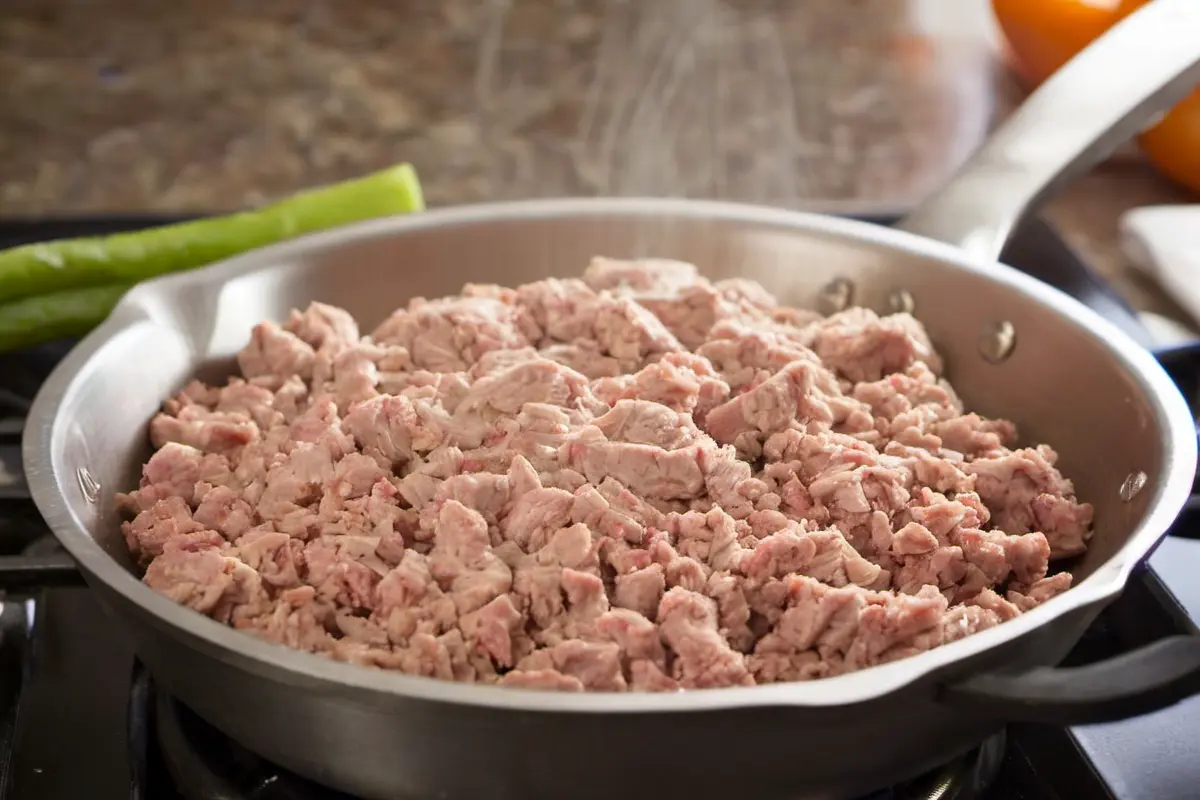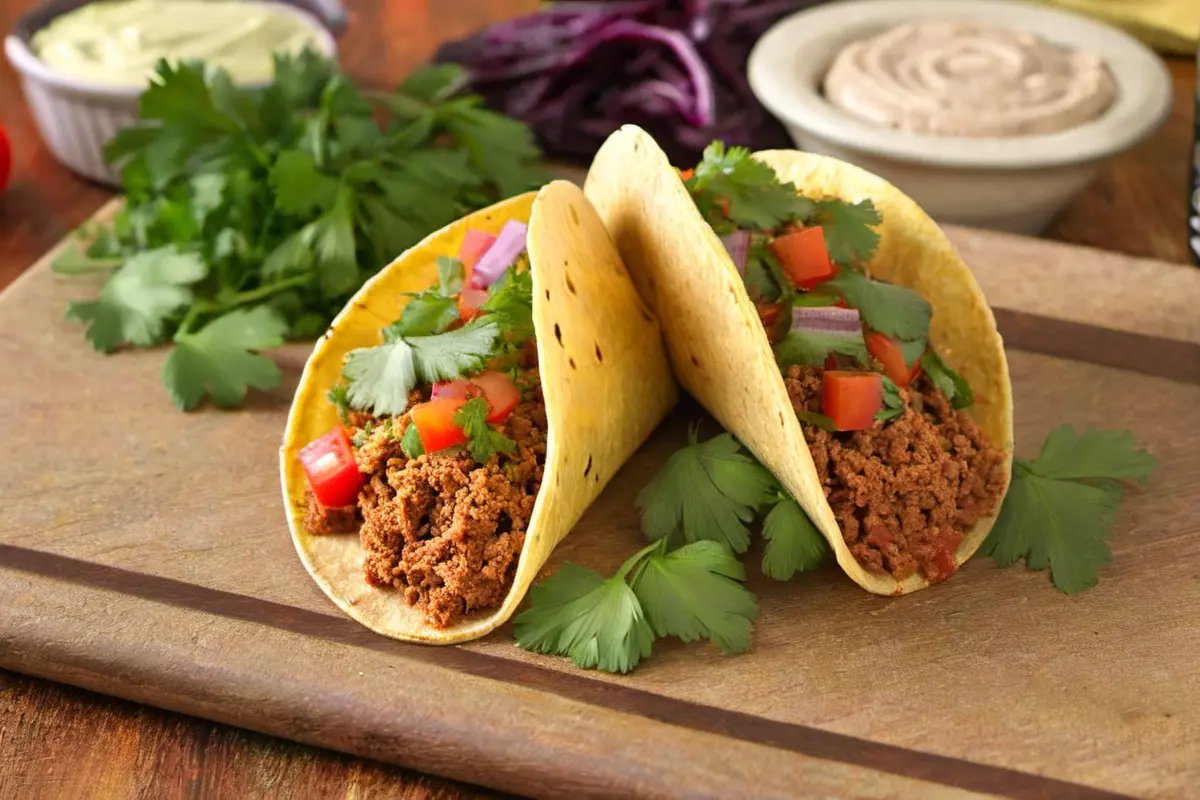When it comes to cooking ground turkey, achieving the perfect level of doneness is crucial for both safety and taste. This article will guide you through everything you need to know about how to determine if your ground turkey has been cooked to perfection. We’ll explore various methods and tips to ensure that your ground turkey is not only safe to eat but also deliciously juicy and flavorful. Whether you’re whipping up burgers, tacos, or meatballs, mastering the art of cooking ground turkey is key to enhancing your dishes.
Understanding Ground Turkey
What Makes Ground Turkey Unique?
Ground turkey is a popular alternative to beef due to its lower fat content and potential health benefits. However, because it is a leaner meat, ground turkey can be somewhat tricky to cook perfectly. It’s important to understand the characteristics of ground turkey to cook it properly.
Firstly, ground turkey includes both white and dark meat. The white meat, primarily from the turkey breasts, is leaner and drier, while the dark meat from the legs and thighs is more flavorful and contains more fat. Depending on your taste preference and health considerations, you can choose either type, but remember, both need to be cooked to the same internal temperature.
The Importance of Cooking Ground Turkey Thoroughly
Cooking ground turkey thoroughly is crucial for food safety. All poultry, including ground turkey, must be cooked to an internal temperature of 165 degrees Fahrenheit. This ensures that harmful bacteria such as salmonella are destroyed, preventing foodborne illnesses. Moreover, a well-cooked turkey should lose its pink color and turn a more solid white or light brown, and the juices should run clear.
Choosing the Right Tools for Cooking
To cook ground turkey properly, it’s essential to use the right tools. A reliable meat thermometer is indispensable. It’s the most accurate way to ensure that the meat has reached a safe internal temperature. Additionally, cooking ground turkey requires medium-high heat and a non-stick skillet or pan to prevent sticking and ensure even cooking.
By understanding these key aspects and preparing with the right tools, you can ensure that your ground turkey is cooked perfectly every time. In the next section, we’ll delve deeper into the critical importance of ensuring ground turkey is cooked thoroughly to guarantee food safety and optimal taste.
Determining Doneness
Using Temperature
The most foolproof way to ensure your ground turkey is cooked thoroughly is by using a meat thermometer. This method eliminates guesswork: simply insert the thermometer into the thickest part of the meat. When it registers 165°F, your turkey is perfectly cooked. To learn more about effective temperature measurement and cooking times, visit our detailed guide on how long to cook ground turkey. Always ensure that the thermometer is not touching any bones or the pan, as this can give a false reading.
Timing Guidelines
While a thermometer is the best tool for accuracy, understanding approximate cooking times can help you manage your kitchen activities efficiently. Generally, ground turkey needs about 10 to 15 minutes to cook through on a stovetop over medium heat. However, these times can vary depending on the size and thickness of your meat portions. It’s important to adjust your timing based on what you observe as you cook.
Visual and Textural Cues
Observing the changes in the meat as it cooks is another way to judge doneness. As ground turkey cooks, it changes from a pinkish color to a light brown or white. The meat should no longer be glossy and should feel firm to the touch. Moreover, properly cooked ground turkey will have no pink inside and the juices will run clear. However, relying solely on visual cues can be misleading, so using a thermometer in conjunction with these observations is best.
By mastering these methods—temperature checks, timing, and visual cues—you can cook ground turkey to perfection, enhancing both the safety and flavor of your dishes. In the following section, we’ll discuss various cooking methods that can help achieve the best results when preparing ground turkey.
Cooking Methods
Stovetop Cooking
Cooking ground turkey on the stovetop is one of the most common methods. It allows for direct control over the temperature and cooking speed. Start by heating a skillet over medium-high heat with a bit of oil to prevent sticking. Incorporate the ground turkey in the mix and break it up using the spatula. As it cooks, stir occasionally to ensure even cooking and to prevent it from sticking to the pan. The turkey is done when it’s no longer pink and reaches an internal temperature of 165°F.

Grilling
Grilling ground turkey adds a delicious smoky flavor that’s hard to achieve with other cooking methods. To grill turkey burgers or meatballs, preheat your grill to medium-high heat. Shape your turkey into patties or balls and place them on the grill. Grill each side for about 5 to 7 minutes, checking the internal temperature with a thermometer to ensure they reach 165°F. Grilling requires careful attention to avoid overcooking, as the meat can dry out quickly.
Oven Methods
The oven is ideal for cooking large batches of ground turkey or for recipes that require baking, like meatloaf or casseroles. Preheat your oven to 375°F. Spread the ground turkey evenly in a baking dish or shape it as needed for your recipe. Baking times can vary, but typically ground turkey will need about 20 to 30 minutes in the oven. Always use a meat thermometer to check that the internal temperature has reached 165°F before serving.
Each of these methods provides a unique flavor and texture to ground turkey. By understanding and applying these techniques, you can ensure that your ground turkey is not only safe to eat but also delicious and perfectly cooked. In the next section, we’ll look at some common mistakes to avoid and tips to enhance the flavor and juiciness of your ground turkey dishes.
Common Mistakes and Tips
Overcooking Concerns
One of the biggest challenges with cooking ground turkey is avoiding overcooking, which can lead to dry, tough meat. Since turkey is a lean protein, it doesn’t have much fat to keep it moist during cooking. Therefore, it’s crucial to monitor the cooking time and temperature closely. Always remove the turkey from the heat as soon as it reaches the safe internal temperature of 165°F to prevent it from drying out.
Preventing Dryness
To keep ground turkey moist and flavorful, consider adding a bit of olive oil or a small amount of broth during cooking. This not only helps in preventing the meat from sticking to the pan or grill but also adds moisture to compensate for the low fat content. Additionally, mixing in ingredients like chopped onions, bell peppers, or other vegetables can enhance moisture and flavor.
Another tip is to avoid compacting the turkey too tightly when forming patties or meatballs. A looser formation allows heat to distribute more evenly and can help maintain juiciness.
By steering clear of these common pitfalls and implementing these simple tips, you can significantly improve the texture and taste of your ground turkey dishes. In our final section, we’ll wrap up with a conclusion that summarizes the key points discussed throughout this guide.
Conclusion
Mastering how to cook ground turkey is an essential skill that enhances your culinary repertoire. By ensuring it reaches the safe internal temperature of 165°F, you safeguard your meals against foodborne illnesses while preserving the meat’s flavor and juiciness. Remember, the use of a meat thermometer is crucial for achieving this goal effectively.
Furthermore, understanding the various cooking methods—whether stovetop, grilling, or oven—allows you to prepare ground turkey in a way that best suits your dish’s requirements. Keeping an eye on not overcooking the turkey is key to maintaining its tenderness and moisture. Adding flavorful seasonings and being mindful of moisture can transform your ground turkey dishes into delightful, healthy meals that appeal to everyone.
With the insights and techniques shared in this guide, you are now equipped to cook ground turkey to perfection. Enjoy the versatility and health benefits of ground turkey in your cooking adventures, confident that each dish will be safe, delicious, and perfectly cooked. Next, we’ll answer some frequently asked questions to help clear up any uncertainties you might have about cooking ground turkey.
Frequently Asked Questions
How long will the cooking of ground turkey take over the stove?
It typically takes about 10 to 15 minutes to cook ground turkey on the stovetop over medium heat. However, the exact timing can vary based on the amount of turkey and the specific heat setting of your stove. Always ensure the turkey reaches an internal temperature of 165°F to confirm it’s fully cooked.
How do I find the perfect method of seasoning turkey?
Ground turkey pairs well with a wide range of seasonings. For basic seasoning, you can’t go wrong with salt, pepper, garlic powder, and onion powder. For more flavor, consider adding paprika, dried herbs like oregano or thyme, or even a splash of Worcestershire sauce. Mix the seasonings into the meat before cooking to ensure the flavors are well distributed. Discover more creative and effective seasoning techniques in our guide on the best way to season ground turkey.
Can I substitute ground turkey instead for ground beef when making my recipes?
Absolutely! Ground turkey is a fantastic substitute for ground beef in most recipes. It’s particularly useful in dishes like burgers, meatballs, and tacos. Keep in mind that since turkey is leaner than beef, you might need to adjust the cooking time slightly and consider adding extra moisture to prevent dryness.
How do I store leftover ground turkey?
Leftover ground turkey should be stored in an airtight container and placed in the refrigerator as soon as it cools down. It will be safe to eat for about three to four days. If you need to store it longer, you can freeze it for up to three months. Thaw frozen turkey in the refrigerator overnight before reheating and consuming.
What are some popular dishes that use ground turkey?
Ground turkey is extremely adaptable and is utilized in a myriad of recipes. Some popular recipes include turkey chili, turkey burgers, turkey meatloaf, and turkey tacos. Its mild flavor makes it a perfect canvas for a range of seasonings and sauces, making it easy to incorporate into your favorite meals.
These questions highlight some of the most common concerns and curiosities people have when cooking with ground turkey. Armed with this knowledge, you can confidently cook and enjoy ground turkey in a variety of delicious ways.

